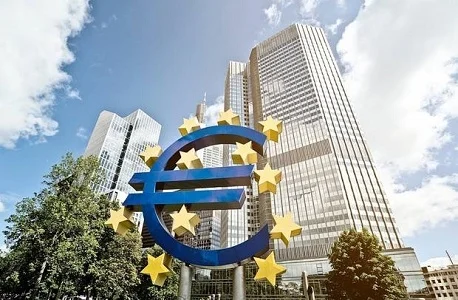SGX Commodities to break iron ore derivatives volume record in 2022
13th December, 2022 | Luke Jeffs

Trading in SGX’s flagship iron ore 62% futures contract increased by 37.6% to top 20 million lots for the year-to-date until end-October, according to data from the exchange
By Luke Jeffs
SGX Commodities is on track to clear three billion tonnes of iron ore derivatives this year, off the back of strong financial participation.
Trading in SGX’s flagship iron ore 62% futures contract increased by 37.6% to top 20 million lots for the year-to-date until end-October, according to data from the exchange.
The iron ore 62% is SGX Group’s most-traded commodities contract and in November 2022, its second most popular derivatives contract overall after the vast FTSE China A50 index future. With active risk management and strong financial participation, the exchange looks set for record volumes across its iron ore, coal, freight and rubber complex in 2022.
Speaking at the SGX Commodities Day in London attended by commodities analysts, traders and brokers, Tan Tee Yong, a director from the SGX Commodities team, said: “In the last few years, the commodities derivatives market has been shaped by several global factors including the pandemic, the supply chain disruption, rising geopolitical tensions as well as the high inflationary environment.”
The global commodities story has been complicated in the past year or so by the apparent slowdown of the Chinese economy but SGX has managed to continue to grow its business despite this uncertainty.
Setting SGX commodities apart is its strength in seaborne price discovery and commodities contracts that underpin Asian industrialisation, the core competency that has allowed it to build a niche product shelf.
Two Commodity Pillars
“Today our business is driven by two core pillars. The first is the steel value chain which is anchored by our flagship iron ore products and complemented by our offerings in steel and coking coal,” said Tan. SGX has nearly a 100% share of the international iron ore derivatives market.
Tan continued: “The second core pillar is our freight complex. We view shipping as a very important commodity that provides the glue that binds global trade together. To that end, we acquired Baltic Exchange in 2016 and, since then, we have been leveraging the synergies between global trade and shipping to drive our freight business forward.”
In the past decade, SGX Commodities has achieved market leadership in most of the sectors it is involved in. This includes the iron ore and steel, freight, as well as rubber and petrochemicals, riding on the strong consumption growth story in Asia and beyond.
“Iron ore continues to undergo transformational growth supported by financialisation. As the second largest commodity by weight and volume, iron ore is increasingly gaining recognition as the macro proxy for global economic cycles, especially that of China. Since 2019, we have been clearing two billion tonnes of iron ore annually with daily notional value averaging more than one billion dollars.”
With increasing adoption of iron ore derivatives by financial participants, Tan sees further huge potential in the SGX iron ore market that kickstarted when the group launched the world’s first iron ore swap in 2009.
“The paper market for seaborne iron ore trades about two times that of the underlying physical market which is very small compared to the 20 times or more in the other global commodities markets. Given the economic significance of iron ore and the growing interest in the paper market, investors and asset managers can no longer ignore iron ore in their portfolios,” he said.
A tipping point for iron ore trading volumes, according to Tan, would be its inclusion in the main commodities indices – it is currently included in the S&P GSCI Electric Vehicle Metals Index and S&P GSCI Industrial Metals & Iron Ore Equal Weight Index, with inclusion in the broader GSCI basket a potential next step.
In completing the SGX virtual steel mill, SGX Commodities launched the new Shanghai Rebar futures on October 31 this year, allowing market participants to trade across the steel value chain and to express their views on steel mill margins on a single platform.
“Having a complete risk management solution on an integrated platform means that today we are able to provide a platform of high capital efficiency to market participants through margin offsets. To illustrate, market participants trading the iron ore and rebar pair will get to enjoy up to 50% in margin offsets,” Tan said.
SGX’s freight market share rises to more than 70% in 2022
SGX’s freight market has had a solid year for volumes, trading 1.3 million lots of forward freight agreements (FFA), according to exchange data, which was only slightly down on the same period last year.
And, like the iron ore market, Tan said freight is seeing increasingly participation from financial traders who are attracted by the unique attributes of freight as an asset class. Today, financials contribute about 20% of the total SGX FFA volume.
“The FFA market trades with relatively high volatility and low correlation against the other asset classes and that has been the reason why financials have been attracted to this contract, using it as a portfolio diversifier,” said Tan.
He added: “Increased preference to hedge and trade FFA on SGX has led to a rise in our volume share in the global market from 35% in 2017 to more than 70% this year.”
Supporting the global energy transition
In its attempt to support the industry’s shift to usage of greener commodities and decarbonisation, SGX Commodities has launched a high-grade iron ore contract, a methanol contract and a low sulphur fuel oil contract in the last two years.
In September this year, it launched four new energy metal contracts: two in lithium and two in cobalt, combining this with its leadership in the rubber and steel value chain space to create a SGX virtual car complex, where the electric vehicle market participants can manage risks and discover pricing effectively.
SGX Rubber
SGX Commodities’ SICOM rubber futures serves as a global reference market for the agricultural product. Its volume market share has risen from 40% to 75% over the last five years, and the exchange remains optimistic about this contract, due to growing interest from financial participants wanting to get involved in this product and many of them are outside of Asia.
“We are getting good traction from Europe and the US, where financial volumes from these regions have more than doubled since 2020,” Tan said.
Here again, SGX’s international reach – it has offices in London, New York and Chicago as well as seven across Asia – is key.
The SGX Commodities Day was held in the Westin Hotel in London in November, and brought together some of the world’s top commodities traders, brokers and analysts, including SGX’s many commodities experts.
The presentations are being published in a series.
The first article covering the SGX Commodities Day in London is available here.
The second article in the series, featuring SGX's head of global sales Pol De Win, is available here


